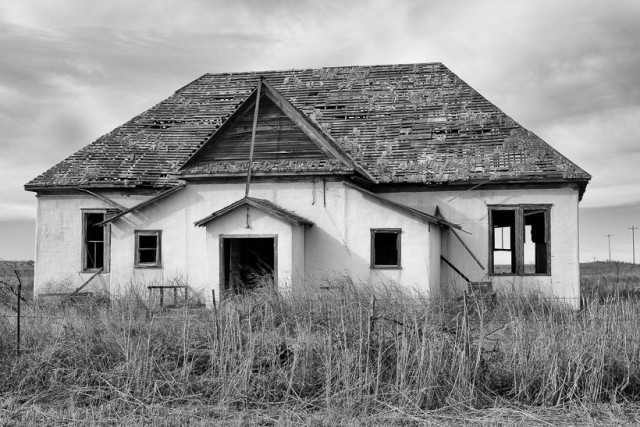The roots of my family, after immigrating to the the states, is in the Texas and Oklahoma panhandle. I still have family farming and ranching in the area. I visited a year and a half ago for a family reunion and was able to see and hear a bit more of the areas history. While down there last weekend for a funeral my cousin Daryle took my sister and I on a heritage tour of the Darrouzett, Texas area. This small community is located along State Highway 15 in northern Lipscomb County. It is at the junction of Plummer and Kiowa creeks. Upon completion of the rail line in 1919–20, settlers and businesses moved south from the Sunset community in Oklahoma to be near the railroad. By 1920, when it was incorporated, Darrouzett had various businesses, two churches, a school, a post office, and a population of 425. In 1984 Darrouzett reported twelve businesses and a population of 444. In 1990 its population was 343, and in 2000 it was 303.
There was mass migration to this area after the Civil War. This area held promises of rich grass, rich soil and a place for new life: Texas Panhandle. Bound by a lawless area to the north known as “No Man’s Land,” what was to become known as Lipscomb County must have appeared both beautiful and formidable at the same time.
The early settlers in this part of Texas found everything needed to establish a home, running water, tall grass, wild turkey, prairie chickens, wild plums and grapes and the bountiful buffalo sod for building. This future Lipscomb County was bisected by Wolf Creek and laced with its tributaries and offered many pleasant groves of cottonwood and willows as a relief to the vast expanses of buffalo grass. This area where Plummer and Kiowa creeks merged, was to soon become a favorite picnic area for the settlers in outlying areas and some years later, the site of Darrouzett.
My mother’s early childhood was in the Sunset community. She attended this one room schoolhouse as did her three siblings. She later moved to Laverne, Oklahoma, where she graduated. My dad was raised 13 miles east of here in another small community called Follett, Texas.

8 Comments
Steve Skinner
Just think of the stories this old school building could tell.
Monte Stevens
Yes, lots of stories. Hard to believe but 5 students from this one room school house went on to become millionaires. My uncle being one of them.
Karin
Love stories so rich in history and an image to help visualize. Very nice!
Monte Stevens
Thank you, Karin!
Tom Dills
It’s a shame when classic old buildings like that are abandoned and left to decay, but it sounds like there are a lot of competing priorities in that community. That’s quite an impressive alumni record, I think. Sounds like the students got a real education, and probably quite a lot of inspiration.
Monte Stevens
One of the coolest aspects of the building is the lack or graffiti. There is a fence surrounding the building but it is only a barbed wire fence. A couple of those millionaires are farmers on their ancestors land and now have a few oil wells. My uncle and a college classmate started Dayspring Cards.
Cedric Canard
If I think about my children’s lives and then think about my life, there is quite a bit of difference in terms of how we were brought up, what we had etc. But when I think about my parent’s generation the differences are truly huge. In every respect. Your story really highlights this to me.
Each generation wishes their children to be better off than they were but it seems to me that those improvements (at least in the Western world) are occurring at an exponential rate. Makes me wonder how sustainable this well-intended wish is.
By the way, I am always fascinated with photos of old buildings such as the one you photographed when there is a story tied to it. Especially when the story is personal to the photographer. It makes for a very moving moment.
Monte Stevens
You bring up a good point, Cedric and one I have pondered also. I look at my grandchildren’s lives in comparison to my parents or grandparents and see that huge difference. My dad spent the early part of his life in an sod home with a dirt floor. Grandma would actually sweep the floor. The grocery market was the cellar. There was no running water. The bathroom was an outhouse. They walked everywhere. And, one thing my grandchildren could not live without: no television!